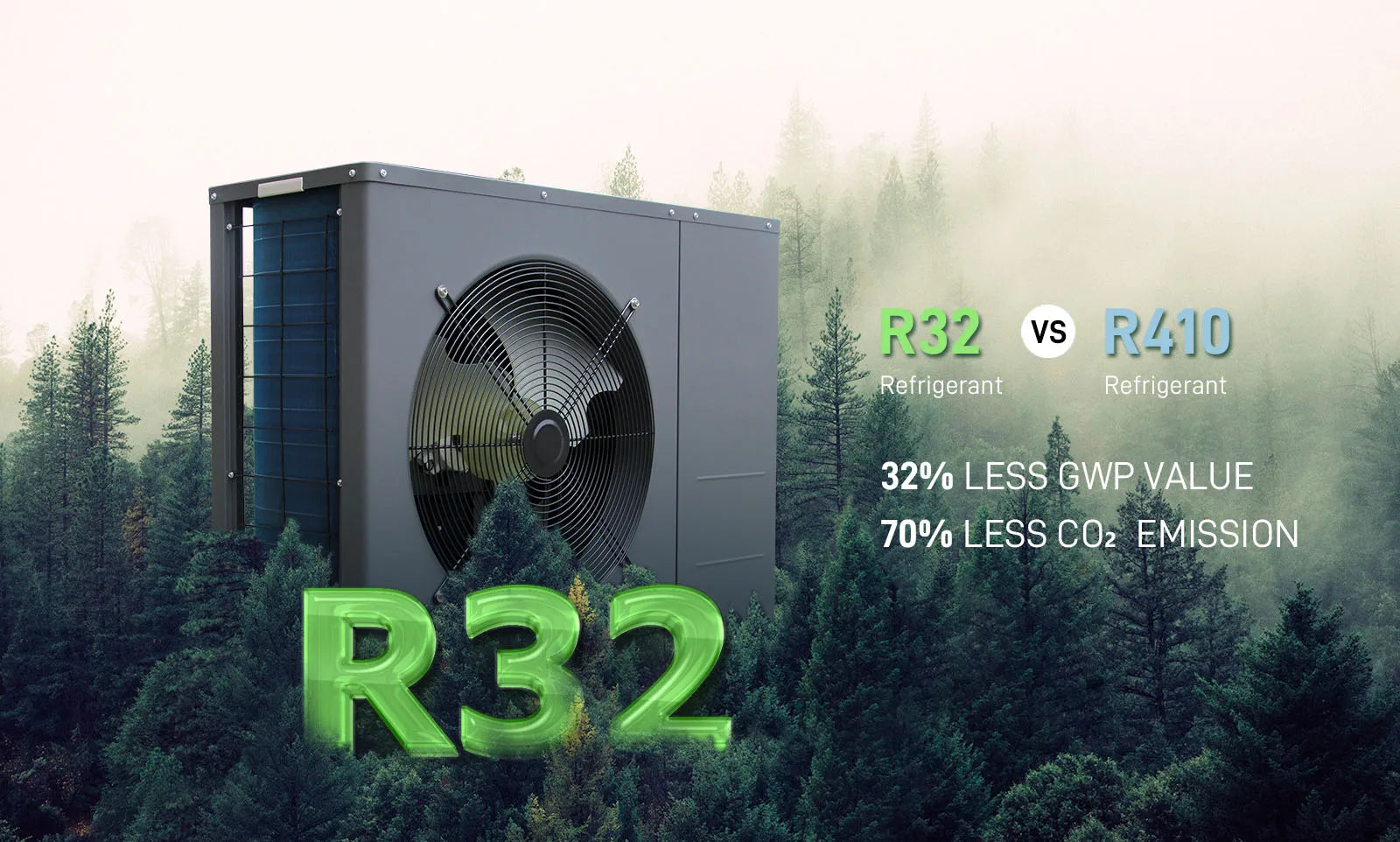When choosing an heat pump system or planning an upgrade, one of the biggest questions is which refrigerant is the best choice for performance, efficiency, and environmental impact. Two of the most widely discussed refrigerants in recent years are R32 and R410A. While both have been used in modern cooling systems, manufacturers and consumers are now leaning toward R32. Let’s break down the differences, advantages, and why R32 is often considered the better option.
What is R410A?
R410A has been the industry standard for many years. It’s a hydrofluorocarbon (HFC) refrigerant that replaced older, ozone-depleting refrigerants such as R22. Known for good cooling efficiency and safety, it became the go-to refrigerant in residential and commercial air conditioners for over two decades.
Key characteristics of R410A:
-
Non-ozone depleting
-
High efficiency compared to R22
-
Widely available and proven track record
However, R410A has one major drawback: its Global Warming Potential (GWP) is around 2,088, making it far less environmentally friendly.
What is R32?
R32 is a newer generation refrigerant that has gained global attention as an eco-friendlier alternative. It’s also an HFC but has been designed to deliver high efficiency with much lower environmental impact.
Key characteristics of R32:
-
GWP of only 675 (about one-third of R410A)
-
Zero ozone depletion potential
-
Higher cooling efficiency per volume of refrigerant
-
Easier to recycle
R32 has already been adopted as the standard refrigerant in many parts of Asia, Europe, and Australia, with other markets rapidly following suit.
R32 vs R410A: Head-to-Head Comparison
| Feature | R410A | R32 |
|---|---|---|
| Global Warming Potential (GWP) | ~2,088 | ~675 (70% lower) |
| Cooling Efficiency | Good | Higher efficiency, less energy use |
| Charge Volume | Higher (needs more refrigerant) | Lower (uses ~20% less refrigerant) |
| Ozone Depletion | Zero | Zero |
| Safety | Non-flammable | Mildly flammable (A2L), but safe with proper handling |
| Cost Effectiveness | Becoming more expensive due to phase-down | More cost-effective long term |
| Future Proofing | Being phased out globally | Preferred standard for new systems |
Why R32 is the Better Choice
-
Lower Environmental Impact
With a GWP that is roughly one-third of R410A, R32 is significantly better for the planet and is aligned with international agreements to phase down high-GWP refrigerants. -
Energy Efficiency
R32 systems generally use less power to achieve the same cooling effect, which translates to lower electricity billsfor consumers. -
Lower Refrigerant Charge
R32 requires about 20% less refrigerant compared to R410A for the same cooling capacity, making it more resource-efficient. -
Future Ready
Many countries are already restricting the use of R410A, so investing in an R32 system ensures compliance with future regulations and better resale value. -
Proven Performance
Major manufacturers such as Daikin, Mitsubishi, and Panasonic have already adopted R32 across most of their new air conditioning product lines.
Are There Any Downsides to R32?
The only notable concern with R32 is that it is classified as mildly flammable (A2L). However, in real-world applications, the risk is minimal because air conditioners and heat pumps are designed with strict international safety standards. Proper installation and maintenance eliminate this concern.
Final Verdict
While R410A played a vital role in modernizing the air conditioning and heat pump industry, R32 clearly comes out on top in today’s world. It is more energy-efficient, eco-friendly, cost-effective, and aligned with global environmental goals. For homeowners, businesses, and installers looking toward the future, R32 is the smarter and more sustainable choice.

Share:
Salt Chlorinator System